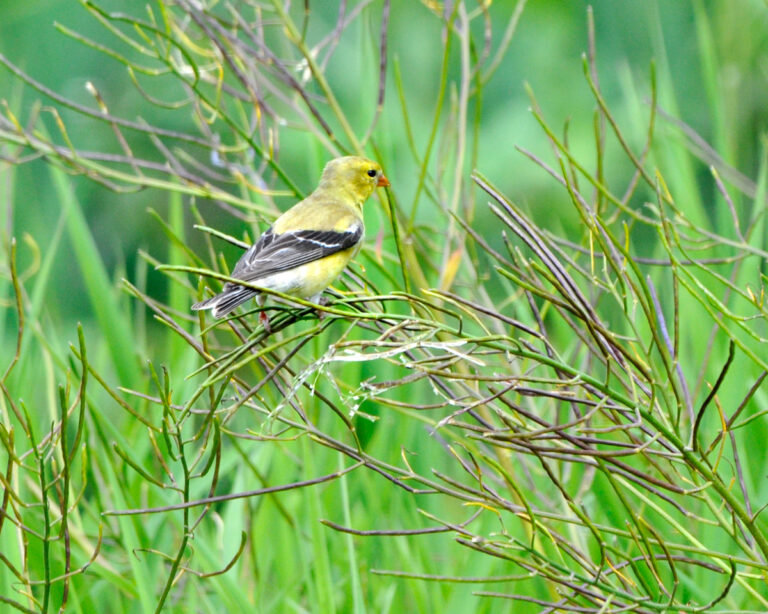Without native plants, entire ecosystems begin to unravel. Pollinators struggle to find food, birds lose nesting habitats, and biodiversity declines. Wherever development and invasive species threaten native landscapes, prioritizing local plant species is one of the most effective ways to support wildlife and maintain ecological stability.
In this guide, we’ll examine the subtle relationships between native plants and the wildlife that depend on them. We’ll explore why non-native species fail to provide the same benefits, the risks of biodiversity loss, and how to select the best native plants for different conservation goals.
Why Prioritizing Native Plants Matters
When native plants disappear, ecosystems don’t just lose beauty. They lose resilience. Native species have evolved over thousands of years to thrive in local climates, soils, and wildlife communities, creating self-sustaining environments that require minimal human intervention.
Native Plants Promote Long-Term Ecosystem Stability
Beyond providing food for wildlife, native plants shape the physical environment, influencing water retention, soil structure, and nutrient cycling in ways that non-native species often cannot.
- Water Retention & Erosion Control: Deep-rooted native species like switchgrass (Panicum virgatum) and little bluestem (Schizachyrium scoparium) prevent soil erosion and help manage stormwater. While non-native turf grasses do offer some stabilization, their shallow roots absorb only about half as much water as native plants, leading to increased runoff and reduced landscape resilience.
- Soil Regeneration: Many native plants, such as purple coneflower (Echinacea purpurea), improve soil quality by fostering beneficial microbes and returning nutrients to the soil.
- Reduced Chemical Dependence: Because native plants evolved in local conditions, they thrive without excessive fertilizers or pesticides.
Without native plants, ecosystems become more fragile, requiring costly human intervention to maintain what nature once did on its own.
The Risks of Invasive and Non-Native Plants
Not all non-native plants are invasive, but many spread aggressively, outcompeting native vegetation and disrupting natural processes. For example:
- Japanese knotweed (Reynoutria japonica) takes over riverbanks, preventing native species from growing and increasing erosion risks.
- Bradford pear trees (Pyrus calleryana) spread quickly and create dense monocultures, reducing plant diversity.
- Canada thistle (Cirsium arvense) invades fields and grasslands, displacing native wildflowers that pollinators rely on. Unlike native thistles, it spreads aggressively and offers little ecological benefit.
- Norway maple (Acer platanoides) produces a thick canopy that shades out native plants, altering entire forest ecosystems.
When these species take over, they don’t just crowd out native plants. They permanently alter landscapes, making it difficult for native species to recover.
How Native Plants Interact with Different Types of Wildlife
Unlike non-native species, which often lack the necessary traits to support local fauna, native plants have co-evolved with pollinators, birds, and mammals over thousands of years. These relationships are highly specialized: some species rely entirely on native plants for survival.
Pollinators: Bees, Butterflies, and Hummingbirds
Pollinators are among the most dependent on native plants. Many native bees require specific plant species for nectar and pollen, while butterflies often rely on native host plants for egg-laying and caterpillar development.
- Native wildflowers such as goldenrod (Solidago spp.), coneflowers (Echinacea spp.), and asters (Symphyotrichum spp.) provide nectar and pollen for a wide range of pollinators.
- Many non-native ornamental plants, like double-petaled cultivars, produce little to no nectar or pollen, making them functionally useless to pollinators
Without these native plants, pollinators struggle to find the resources they need, leading to population declines and weakened ecosystems.
Birds and Small Mammals
Birds depend on native plants for food, shelter, and nesting materials. Many songbirds, including warblers and chickadees, rely on the caterpillars and insects found only on native trees.
- Berry-producing shrubs like dogwood (Cornus spp.) and elderberry (Sambucus spp.) provide high-energy food sources, especially in fall and winter.
- Nut-bearing trees such as oaks and hickories support squirrels and other small mammals that play a role in seed dispersal.
- Non-native trees like Bradford pear (Pyrus calleryana) often provide no suitable food for local insects, reducing the food available for birds.
Regardless of your conservation goals, native plants are irreplaceable. They are not just a food source but a structural foundation for entire ecosystems. Removing them disrupts food webs, decreases biodiversity, and weakens natural resilience.
How to Select the Best Native Plants for Your Region and Goals
Choosing the right native plants must go beyond aesthetics. You’ll want a diverse mix of species that thrive in local conditions while providing ecological benefits. Different plants support different wildlife, contribute to soil health in unique ways, and vary in their maintenance needs.
The key to success is understanding regional plant communities, conservation priorities, and habitat goals before making a selection.
The Importance of Planting a Polyculture
Monocultures—plantings made up of only one or two species—are more vulnerable to pests, disease, and weather extremes. A polyculture, by contrast, mimics natural ecosystems.
By incorporating a wide range of native plants with different bloom times, root structures, and ecological roles, you create a resilient system that supports more wildlife, enhances soil health, and stabilizes your planting long term. This diversity helps ensure your conservation goals are met even as environmental conditions change.
Understanding Keystone Species for Your Region
Not all native plants contribute equally to ecosystem health. Some species—known as keystone plants—provide disproportionate ecological benefits by supporting large numbers of pollinators, birds, and other wildlife.
In the Northeastern United States, certain trees, shrubs, and perennials act as cornerstone species for local ecosystem:
- Oaks (Quercus spp.): Support over 500 species of caterpillars, making them critical for bird populations.
- Goldenrod (Solidago spp.): A top nectar source for late-season pollinators and a host plant for dozens of butterfly species.
- Milkweed (Asclepias spp.): Essential for monarch butterfly reproduction and a food source for many native bees.
- Dogwoods (Cornus spp.): Provide berries for migrating birds and attract a range of beneficial insects.
Prioritizing keystone species ensures your planting has a broader ecological impact.
Choosing Plants Based on Conservation Goals
The best native plants for a project depend on your objectives. Whether focused on pollinators, birds, or soil restoration, your choices should align with your goals.
If Your Goal Is to Attract Pollinators:
Select nectar-rich flowers with staggered bloom times to provide food throughout the season.
Examples: Bee balm (Monarda spp.), wild bergamot (Monarda fistulosa), purple coneflower (Echinacea purpurea), and New England aster (Symphyotrichum novae-angliae).
If Your Goal Is to Support Birds and Small Mammals:
Choose plants that provide high-energy seeds, berries, and nuts that sustain wildlife through migration and winter.
Examples: Serviceberry (Amelanchier spp.), elderberry (Sambucus canadensis), and black chokeberry(Aronia melanocarpa).
If Your Goal Is to Improve Soil and Water Retention:
Use deep-rooted plants that prevent erosion, filter pollutants, and improve soil structure.
Examples: Switchgrass (Panicum virgatum), little bluestem (Schizachyrium scoparium), and dogwood (Cornus spp.).
Defining a clear ecological goal makes plant selection more strategic and effective.
Considerations for Urban vs. Rural Plantings
Not all native plants are suitable for every environment. Some species require large open spaces, while others adapt well to small urban gardens.
- For urban pollinator gardens: Choose compact, well-behaved perennials like wild columbine (Aquilegia canadensis) and butterflyweed (Asclepias tuberosa) that thrive in small spaces.
- For large-scale meadow or prairie restoration: Use a mix of grasses and wildflowers such as big bluestem (Andropogon gerardii) and black-eyed Susan (Rudbeckia hirta) to create a self-sustaining habitat.
- For wetland or riparian restoration: Opt for moisture-loving plants like swamp milkweed (Asclepias incarnata) and blue flag iris (Iris versicolor) to stabilize soil and provide habitat.
Matching plant choices to site conditions ensures long-term success and minimal maintenance.
Strengthening Ecosystems With Ernst Conservation Seeds
Native plants are essential for maintaining healthy ecosystems and providing food, shelter, and stability for pollinators, birds, and other wildlife. By prioritizing keystone species and selecting plants suited to specific conservation goals, gardeners and landscape architects can support wildlife while improving soil and water health.
Choosing the right native plants is a crucial step in restoring biodiversity and building resilient landscapes. For further guidance, contact the experts at Ernst Conservation Seeds, or use our Seed Finder to select the best native species for your next planting project. Every native plant makes a difference—start growing a healthier ecosystem today.

